
Georges Carpentier was a French boxer, actor and World War I pilot. A precocious pugilist, Carpentier fought in numerous categories. He fought mainly as a light heavyweight and heavyweight in a career lasting from 1908 to 1926. A French professional champion on several occasions, he became the European heavyweight champion before the First World War. A sergeant aviator during the Great War, he was wounded before returning to civilian life. He then discovered rugby union, playing as a winger.
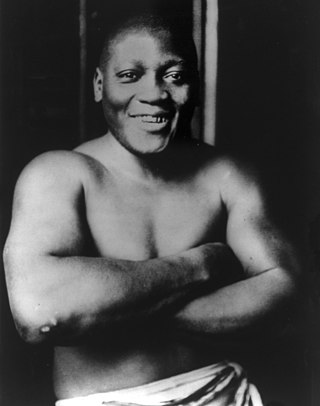
John Arthur Johnson, nicknamed the "Galveston Giant", was an American boxer who, at the height of the Jim Crow era, became the first black world heavyweight boxing champion (1908–1915). His 1910 fight against James J. Jeffries was dubbed the "fight of the century". Johnson defeated Jeffries, who was white, triggering dozens of race riots across the U.S. According to filmmaker Ken Burns, "for more than thirteen years, Jack Johnson was the most famous and the most notorious African American on Earth". He is widely regarded as one of the most influential boxers in history. Transcending boxing, he became part of the culture and history of racism in the United States.
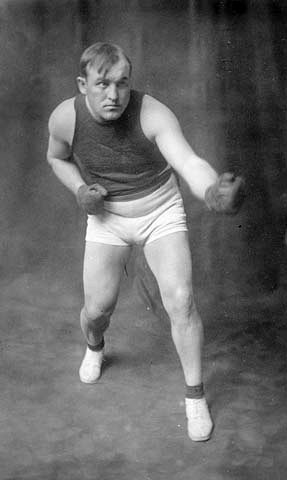
Tommy Burns was a Canadian professional boxer. He is the only Canadian-born World Heavyweight Boxing Champion. The first to travel the globe in defending his title, Burns made 13 title defences against 11 different boxers, despite often being the underdog due to his size. Burns took on all challengers as Heavyweight Champion, leading to his legendary bout with the African American Jack Johnson. According to his biographer, Burns insisted, "I will defend my title against all comers, none barred. By this I mean white, black, Mexican, Indian, or any other nationality. I propose to be the champion of the world, not the white, or the Canadian, or the American. If I am not the best man in the heavyweight division, I don't want the title."
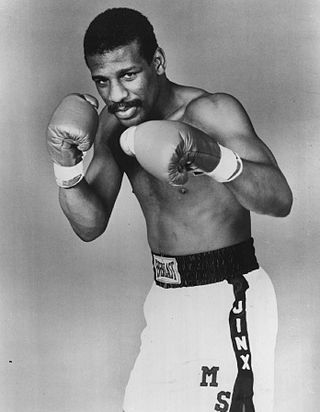
Michael Spinks is an American former professional boxer who competed from 1977 to 1988. He held world championships in two weight classes, including the undisputed light heavyweight title from 1983 to 1985, and the lineal heavyweight title from 1985 to 1988. As an amateur he won a gold medal in the middleweight division at the 1976 Summer Olympics.

Canada's Wonderland, formerly known as Paramount Canada's Wonderland, is a 330-acre (130 ha) amusement park located in Vaughan, Ontario, a municipality within the Greater Toronto Area. Opened in 1981 by the Taft Broadcasting Company and the Great-West Life Assurance Company, it was the first major theme park in Canada and remains the country's largest. Cedar Fair purchased the park from Paramount Parks in 2006, and they have owned and operated the park since then. In 2019, it was the most-visited seasonal amusement park in North America with an estimated 3.9 million guests. The park still retains this record, with an estimated 3.8 million guests in 2022 amid the COVID-19 pandemic.
Boxing in the 1920s was an exceptionally popular international sport. Many fights during this era, some 20 years away or so from the television era, were social events with many thousands in attendance, both men and women.
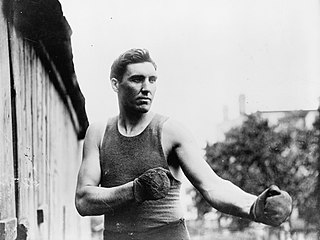
Jess Myron Willard was an American world heavyweight boxing champion billed as the Pottawatomie Giant. He won the world heavyweight title in 1915 by knocking out Jack Johnson.

James Jackson Jeffries was an American professional boxer and world heavyweight champion.

Luna Park was an amusement park that operated in the Coney Island neighborhood of Brooklyn in New York City, United States, from 1903 to 1944. The park was located on a site bounded by Surf Avenue to the south, West 8th Street to the east, Neptune Avenue to the north, and West 12th Street to the west. Luna Park was located partly on the grounds of the small park it replaced, Sea Lion Park, which operated between 1895 and 1902. It was the second of the three original, very large, iconic parks built on Coney Island; the others were Steeplechase Park and Dreamland. At Coney Island's peak in the middle of the 20th century's first decade, the three amusement parks competed with each other and with many independent amusements.

Luna Park is a name shared by dozens of currently operating and defunct amusement parks. They are named after, and partly based on, the first Luna Park, which opened in 1903 during the heyday of large Coney Island parks. Luna parks are small-scale attraction parks, easily accessed, potentially addressed to the permanent or temporary residential market, and located in the suburbs or even near the town center. Luna parks mainly offer classic funfair attractions, newer features and catering services.

George Lewis "Tex" Rickard was an American boxing promoter, founder of the New York Rangers of the National Hockey League (NHL), and builder of the third incarnation of Madison Square Garden in New York City. During the 1920s, Tex Rickard was the leading promoter of the day, and he has been compared to P. T. Barnum and Don King. Sports journalist Frank Deford has written that Rickard "first recognized the potential of the star system." Rickard also operated several saloons, hotels, and casinos, all named Northern and located in Alaska, Nevada, and Canada.

The Bouclier de Brennus, or Brennus Shield in English, is a trophy awarded annually to the French rugby union club that wins the domestic league.
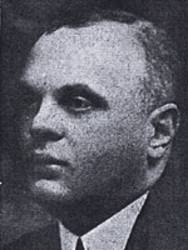
Jack Curley, born Jacques Armand Schuel, was a sports promoter of the early 1900s. He managed several high-profile boxing events around the turn-of-the-century and he also established professional wrestling as a viable business in the big city, and he eventually built the New York City office into an industry power while negotiating an agreement between the nation's most powerful regional territories.

Artur Asilbekovich Beterbiev is a Russian and Canadian professional boxer. He has held the undisputed championship in the light-heavyweight division since October 2024, as well as the Ring magazine and International Boxing Organization (IBO) titles.

Théodore Vienne, also known as Théo Vienne, was a textile manufacturer in Roubaix who with Maurice Perez founded the Paris–Roubaix cycle race in 1896.

Wonderland Amusement Park was a trolley park that operated on the east side of Indianapolis, Indiana, United States, from 1906 to 1911. The park, near the intersection of East Washington Street and Gray Street, surrounded a lake and featured a Shoot-the-Chutes ride, a scenic railway ride, the signature 125-foot (38 m)-tall Electric Tower, a ride that simulated the Johnstown Flood, a dirigible, a funhouse, a dance pavilion, and other exhibits and games in its 24 buildings. In addition to the standing attractions, the park also offered live exhibits and performances from bands, acrobats, animal acts, vaudeville acts, and members of a "Filipino tribe", the "Igorrote."

Al Palzer was a boxer who fought from 1911 to 1915, one of the "White Hopes" during the reign of world heavyweight champion Jack Johnson, an African American. The 6 feet 3 inches (1.91 m) Palzer, who was German-American, fought in the heavyweight division at a weight of 218 to 228 lbs. Palzer was one of the first boxers to fight for the World White Heavyweight Championship title.
Petty officer Matthew 'Nutty' Curran was an Irish professional heavyweight boxer, from 1900 to 1930. His fighting name, "Nutty", was derived from the English slang term for someone who is mentally unbalanced. Curran won the Irish heavyweight title, British Empire heavyweight title, and vied for the British Boxing Board of Control British heavyweight title. British heavyweight title bouts featuring Curran were neither recognized by the National Sporting Club (NSC) at the time, nor retroactively by the British Boxing Board of Control, because the bouts did not take place on National Sporting Club premises. His professional fighting weight varied throughout his career from 178 lb. (81 kg) to 199 lb. (90.3 kg).
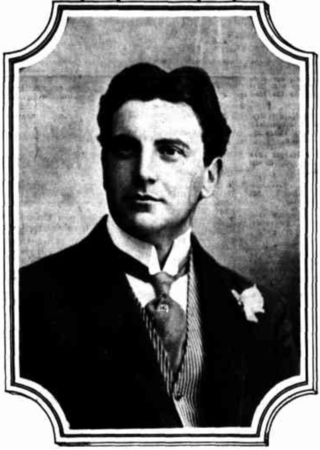
Tollemache Heriot Eslick (1877–?), more commonly known as T. H. Eslick, who also used the name Thomas Henry Eslick, was a twice-bankrupt showman, prone to exaggeration, who indicated he was an English-born construction engineer specialising in amusement parks and ballrooms. He was given to be a 'bluff and good natured Cornishman with a hearty sense of humour and a ready wit', taller than 6 feet (1.8 m), and of good health. Not much has been independently written of Eslick, and much information derived from newspaper interviews – the entrepreneur indicating in 1914 he was born in India, contrasting with his usual stated English origins.



















